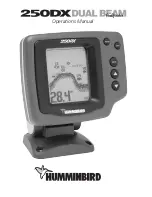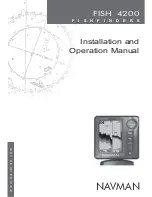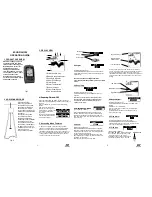
11
Cone angle vs
Diameter of Coverage
Depth
8°
9°
12°
19°
20°
10'
1.4'
1.6'
2.2'
3.4'
3.5
20'
2.8'
3.2'
4.3'
6.7'
6.9
30'
4.2'
4.7'
6.3'
10.0'
10.6
40'
5.6'
6.3'
8.4'
13.4'
14.1
50'
7'
7.9'
10.6'
16.7'
17.6
60'
8.4'
9.4'
12.6'
20.8'
21.2
70'
9.4'
11.0'
14.7'
23.4'
24.7
80'
11.2' 12.6'
16.8'
26.8'
28.2
90'
12.6' 14.2'
20.0'
30.1'
31.7
100'
14'
15.7'
21.0'
33.5'
35.3
120'
16.8' 18.9'
25.2'
40.2'
42.3
150'
21'
23.6'
31.5
50.2'
52.9
DEAD ZONE
Beam angle has a large effect on the performance of your flasher. There is more to it than simply area
of coverage. The correct beam angle to use depends entirely on your application. If you are fishing
for suspended fish then you would be pleased with the performance of
the 19° cone. However, if you were going after fish that are holding right
on the bottom along a steep drop-off, you would have better results with
the 9°. This is because of something called dead zone. Dead zone is
an area within the transducer’s cone of sound that is blind to you. The
wider the beam angle, the greater the possible dead zone. The sonar
will mark bottom as the nearest distance it sees. If you are fishing over
a slope, it may see the high side of the slope, at the edge of the cone,
and mark that as bottom. The fish that are holding on the bottom on
the low side of the slope will be invisible to you because they are actually
within the bottom signal on your depth finder. A narrower beam angle
will reduce this effect.
Output Power
Your depth finder puts out a constant amount of power, or sound energy. It does not matter where you have the gain level set. Gain simply controls
how much you amplify the signal that is returned from below. Therefore, a narrow beam transducer will appear to be much more powerful than a
wide beam transducer. This is because you are putting the same amount of power into a smaller area. This can be an advantage if you are fishing
in deep water or a detriment if you are fishing in shallow water. A narrow beam transducer can be overpowering in shallow water. The use of the
LP (Low Power) Mode on your flasher, or the optional S-Cable (page 70), will solve this problem.
Remember to
not
use LP Mode or the S-Cable in depths beyond 20 feet where you will find that you need to turn your Gain Control up
much higher than normal. This will give a noisy display and make interference from other units much more likely.
Depth Finder
Reads Depth Here
DEAD
ZONE
Содержание FL-18
Страница 2: ......































